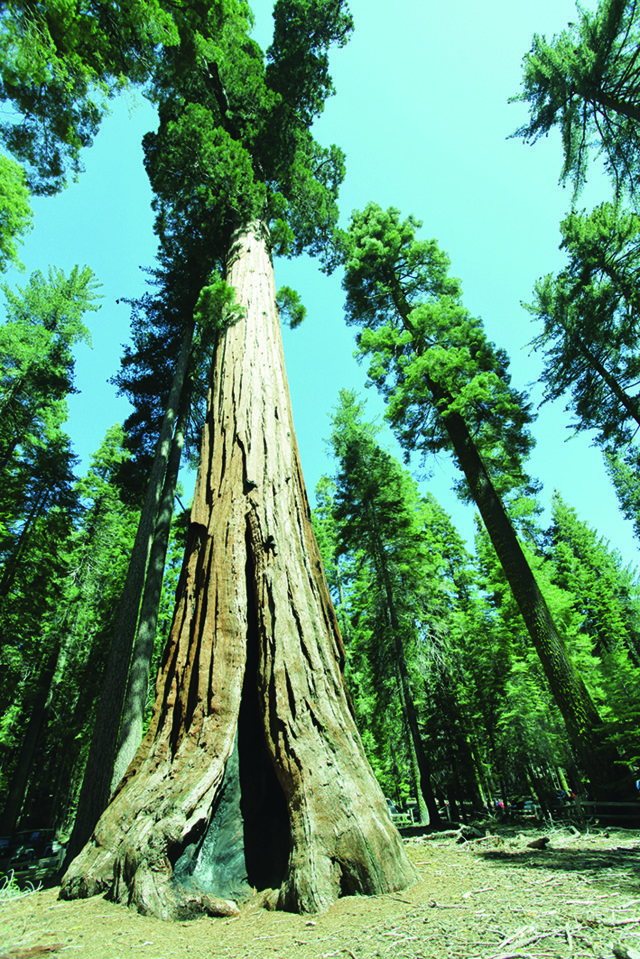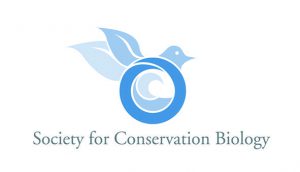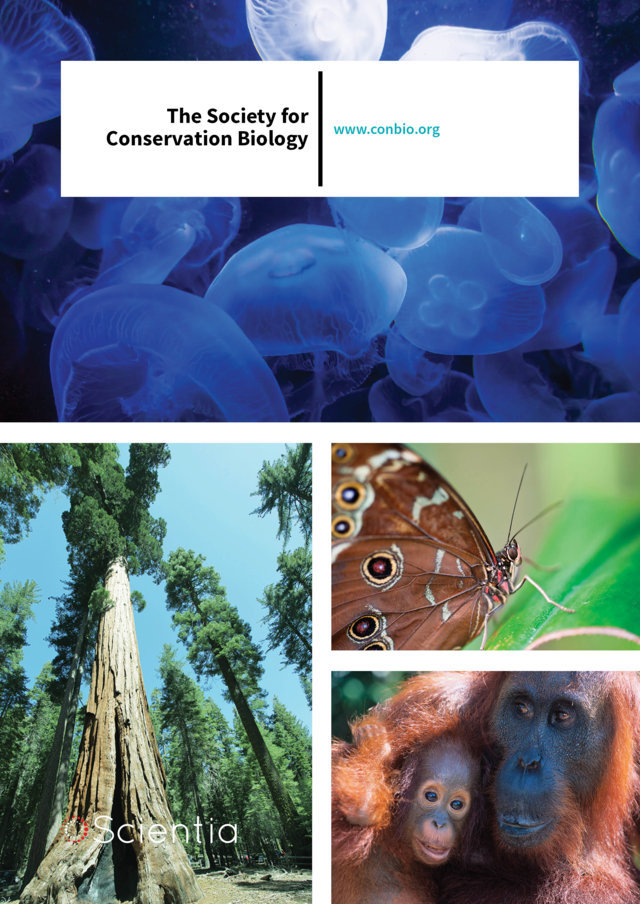The Society for Conservation Biology
 The Society for Conservation Biology (SCB) was founded in 1985, when many scientists felt called to action by the Earth’s rapidly disappearing biodiversity. Scientists saw their study sites changing or disappearing over very short periods of time, and were driven to protect what they could of the ecosystems they had come to know and love. By working together, they believed that they could avert what they saw as the worst biological disaster in the last 65 million years – one that would reach a crescendo in the first half of the 21st century. SCB was therefore established to bring together and give a voice to a global community of conservation professionals dedicated to preserving life on Earth. SCB envisions that such a global community can collectively avert this looming crisis through sound science practices. In addition to scientists, the Society’s 5000+ members also include resource managers, educators, government and private conservation workers and students. This legacy informs SCB’s mission, which is to advance the science and practice of conserving Earth’s biological diversity. SCB achieves this by disseminating research through their publications, by supporting the next generation of conservation leaders through fellowships, training, and outreach, and by providing opportunities for conservation researchers and practitioners to share their work, form exciting collaborations, and influence policy and management decisions that affect Earth’s biodiversity.
The Society for Conservation Biology (SCB) was founded in 1985, when many scientists felt called to action by the Earth’s rapidly disappearing biodiversity. Scientists saw their study sites changing or disappearing over very short periods of time, and were driven to protect what they could of the ecosystems they had come to know and love. By working together, they believed that they could avert what they saw as the worst biological disaster in the last 65 million years – one that would reach a crescendo in the first half of the 21st century. SCB was therefore established to bring together and give a voice to a global community of conservation professionals dedicated to preserving life on Earth. SCB envisions that such a global community can collectively avert this looming crisis through sound science practices. In addition to scientists, the Society’s 5000+ members also include resource managers, educators, government and private conservation workers and students. This legacy informs SCB’s mission, which is to advance the science and practice of conserving Earth’s biological diversity. SCB achieves this by disseminating research through their publications, by supporting the next generation of conservation leaders through fellowships, training, and outreach, and by providing opportunities for conservation researchers and practitioners to share their work, form exciting collaborations, and influence policy and management decisions that affect Earth’s biodiversity.
In this exclusive interview, we have had the pleasure of speaking with Heather DeCaluwe, SCB’s Interim Executive Director, and Nathan Spillman, the Society’s Marketing & Communications Manager. Here, they discuss the Earth’s rapidly declining biodiversity, and how SCB is working to restore and maintain life on Earth, through informing policy, supporting conservation scientists, disseminating research, encouraging collaboration, and much more.
‘The Earth is, of course, an incredibly large system – the problems we face are the result of decades of action (and inaction), and the solutions will likewise probably require a significant period of sustained effort’
Please tell our readers about the devastating decline in biodiversity that we are currently witnessing, as a result of human activity.
There is no way to sugar-coat the big picture: the continual growth of human population and our associated use of natural resources is unsustainable for the Earth. We see this manifest, in real time, in many ways – including climate change, the decline and extinction of many species, and the degradation of local ecosystems, including both our air and water quality. Moreover, because all life on Earth forms an interdependent web, the diversity loss we’ve already suffered imperils other at-risk species. As such, conservation of Earth’s resources has never been more important if we are to persist as a species. Moreover, time is of the essence, as we don’t know exactly how long we have to turn this ship around, so to speak. The Earth is, of course, an incredibly large system – the problems we face are the result of decades of action (and inaction), and the solutions will likewise probably require a significant period of sustained effort.

That said, there are plenty of successes and encouraging signs for the future of conservation biology. One of the most encouraging signs of the past decade has been the degree to which a large swath of the public is aware, interested, and cares about the environment in general and conservation biology, specifically. Further, when I look at our members, I do not see pessimism or defeatism – I see a group of motivated, excited, energetic, and talented researchers and practitioners. Within the context of our Society, they are passionate about their work and ideas, and excited to share with and learn from others in the field. Even with the challenges at large, I definitely see a lot of reasons for optimism.
Do you believe that we, as humans, have an individual and collective responsibility to restore and maintain biological diversity on Earth?
Absolutely – the responsibility we have as humans to maintain biodiversity is driven by both moral and financial concerns, as well as by basic survival. As humans, our actions have an incredible and in some cases devastating impact on the natural world around us. We are one of the estimated 8.7 million species inhabiting earth. By altering the earth’s climate and ecosystems, our actions influence nearly every other living species on earth today. Not only do I believe we have a moral obligation to protect the many other species on earth that we’re harming, but if humans want to survive as a species, we must take actions to preserve the biodiversity around us. For example, humans face a looming food crisis should we allow threatened bee and other pollinator species to go extinct. There are also financial reasons for preserving biodiversity, the so-called ‘ecosystem services’. For example, protecting forest ecosystems provides all animals on earth with oxygen to breathe, reduces climate altering carbon dioxide, helps protect watersheds, regenerates soils and aids in nutrient cycling, controls pathogens and provides medicines, and has a general cooling effect on the Earth. The financial impact of these combined benefits is valued at trillions of dollars. In addition to the moral obligation to preserve biodiversity on Earth, ignoring these direct benefits from ecosystem preservation is also severely short-sighted.

This obligation is felt by individuals, but the response to the challenges we face must be collective, in nature. To quote Michael Soulé, one of the founders of SCB:
‘We assume implicitly that science and technology are neither inherently good nor evil, but are tools that can benefit or harm. We assume implicitly that environmental wounds inflicted by… humans and destructive technologies can be treated by wiser humans and by wholesome technologies. Although we have varying personal philosophies, we share a faith in ourselves, as a species and as individuals, that we are equal to the challenge.’
SCB envisions a world where all people understand, value, and conserve the diversity of life on Earth, and where we hold one another responsible for the stewardship of our shared home.

How does SCB support and facilitate the creation and dissemination of conservation science? In what ways does this aid the management and conservation of ecosystems?
SCB publishes two scientific journals, Conservation Biology, which we founded in 1987 shortly after the formation of SCB, and Conservation Letters. The journals define the field of conservation biology by publishing ground-breaking research. They provide a space for scientists to debate emerging topics such as the role of economic development and poverty alleviation in conservation.
‘In addition to connecting a global community of conservation researchers and practitioners, one of our most important roles is to support, nurture, and inspire the next generation of conservation leaders’
SCB also organises the International Congress for Conservation Biology (ICCB) every two years – to be held in Cartagena, Colombia this July. ICCB is recognised as the most important international meeting for conservation professionals and students. The Congresses connect our global community of conservation professionals, providing a forum for addressing conservation challenges. They are the global venue for presenting and discussing new research and developments in conservation science and practice. Further, they provide a venue for training early-career professionals, and for catalysing conservation action. ICCB is global in scope, bringing together conservation professionals and students from every sector of the field, including the biological and social sciences, management, policy and planning.
Moreover, the journals and congresses directly impact management decisions. Resource managers, educators, and other decision-makers look to the journal and attend our congresses to guide their actions on topics such as corridor design. Many papers that are published and presented through SCB translate science into policy recommendations and action items. In particular, Conservation Letters seeks to cover policy-relevant conservation research from the natural and social sciences.

How does SCB help to increase the application of science to policy?
Because conservation challenges vary greatly across the globe, so must our approach to influencing policy as a solution to said challenges. As a global Society, SCB is composed of seven regional sections – representing all six of the inhabitable continents plus the marine realm. Through our sections, we have a far more significant impact on the application of science to management, policy, and education.
One avenue for our sections to influence policy are by issuing resolutions, declarations, and policy statements. For example, our Asia Section puts significant effort into combatting the illegal wildlife trade. At its 2016 regional congress in Singapore, the Section issued a Resolution on Reducing Illegal Wildlife Trade and Trafficking in Asia. The Resolution offered seven recommendations to stakeholders in the region – including conservation groups, enforcement agencies, and legislative bodies – that will help to combat the trade in wildlife. Likewise, our Oceania Section issued a declaration on land clearing at its regional meeting in 2016 that called on governments to prevent the return of high rates of woodland and forest clearing to protect the unique biodiversity of its marine environments. Our Africa Section issued a position statement on the threat from expansion of palm oil plantations on biodiversity.
Sections can also influence policy through sustained action and collaboration with local governments. In recent years, our Europe Section urged leaders in Poland and beyond to reject changes to a Forest Management Plan that would allow for increased timber harvest in Bialowieza Forest. The Section has worked for many years to protect Bialowieza Forest and old-growth forest stands across the continent. The Society’s Latin America and Caribbean and Marine Sections have worked together in recent years to save the vaquita from extinction by writing to the Mexican government to ban gilnet fishing in vaquita habitat and our North America Section has worked to protect species under the Endangered Species Act, among other things.
Our regional sections provide an avenue for influencing policy in a way that harnesses the insights and understanding from those most familiar with the causes, effects, and societal ramifications for a diverse range of global conservation issues.

Tell us a bit about SCB’s carbon offset project, and its benefits to biodiversity.
For more than ten years, SCB has contributed money to offset greenhouse gas emissions due to Society operations, including our biennial International Congress for Conservation Biology (ICCB). We’ve invested in a nature preserve in South Africa to restore sensitive native thicket habitat that supports rhinoceros, elephant and kudu. More recently, we’ve committed to a grasslands project in Alberta, Canada to eliminate grazing on a 390-ha cattle ranch. Grasslands are purported to store more carbon on a per area basis than any other ecosystem. The project also includes a biodiversity element as grasslands in southern Alberta are home to seven of nine endangered species in the province. In addition to selecting projects that will sequester carbon dioxide, SCB prioritises projects that benefit biodiversity, have long-term viability, and are certified. Currently, the Society is looking to invest in a new project to help offset greenhouse gas emissions from our upcoming ICCB in Cartagena, Colombia.
Through what means does SCB support students and early career scientists and conservationists?
In addition to connecting a global community of conservation researchers and practitioners, one of our most important roles is to support, nurture, and inspire the next generation of conservation leaders, at all stages of their education and early career. SCB manages the David H Smith Conservation Research Fellowship Program, which supports and develops future world leaders and conservation practitioners who are successful at linking conservation science and application.
SCB also supports students and early career scientists through our international and regional congresses, by offering trainings, student presentation and poster competitions and awards, resume-writing workshops, career fairs, and social and networking events that connect students and early career scientists with professionals in the field. Our congresses are organised to maximise their value for students and early career scientists. Poster sessions, for example, receive top billing and we offer travel reimbursement support to help students offset the cost of attendance.
Our journal Conservation Biology publishes papers on the conservation field that cover topics like how to succeed in the conservation job market and necessary skills for non-academic conservation careers. It also recognises papers by students and early career professionals with annual ‘Rising Star’ awards.
Additionally, we host an online Job Board and Career Center, provide leadership, planning, and networking opportunities through our local chapters (which are primarily student-run), and this year initiated our first Graduate Student Research Fellowship Awards. The program offers ten $1,000 fellowships to graduate students to support their field work.

Finally, explain the importance of a diverse, equitable, and inclusive community in restoring and maintaining biological diversity on Earth. How is SCB helping to work towards cultivating such a community?
Today’s complex biodiversity conservation challenges require input and analysis from a variety of voices, vantage points, and expertise from different geographies, backgrounds, disciplines, and dimensions. A variety of viewpoints results in better ideas that can compete with and inform one another to find best solutions to conserve and restore biodiversity.
The success of conservation biology is intertwined with and relies on a commitment to greater access, inclusion, and empowerment of humans of many views, vantage points, identities and geographies who actively participate in conservation with equal opportunity and access at all levels of the Society’s structure. Because successful conservation efforts rely to a large extent on the communities that live near and interact with sensitive ecosystems around the globe, incorporating the insights, ideas, and concerns from a diverse array of stakeholders at every stage of the process is essential.
The goal of the Society’s Equity, Inclusion, and Diversity Committee is to engage a broader community of students and professionals in SCB’s activities, and to help the Society embrace its potential to become more inclusive and welcoming of diversity broadly, and to foster a shared vision and accepting culture for the development of a diverse membership and leadership.


